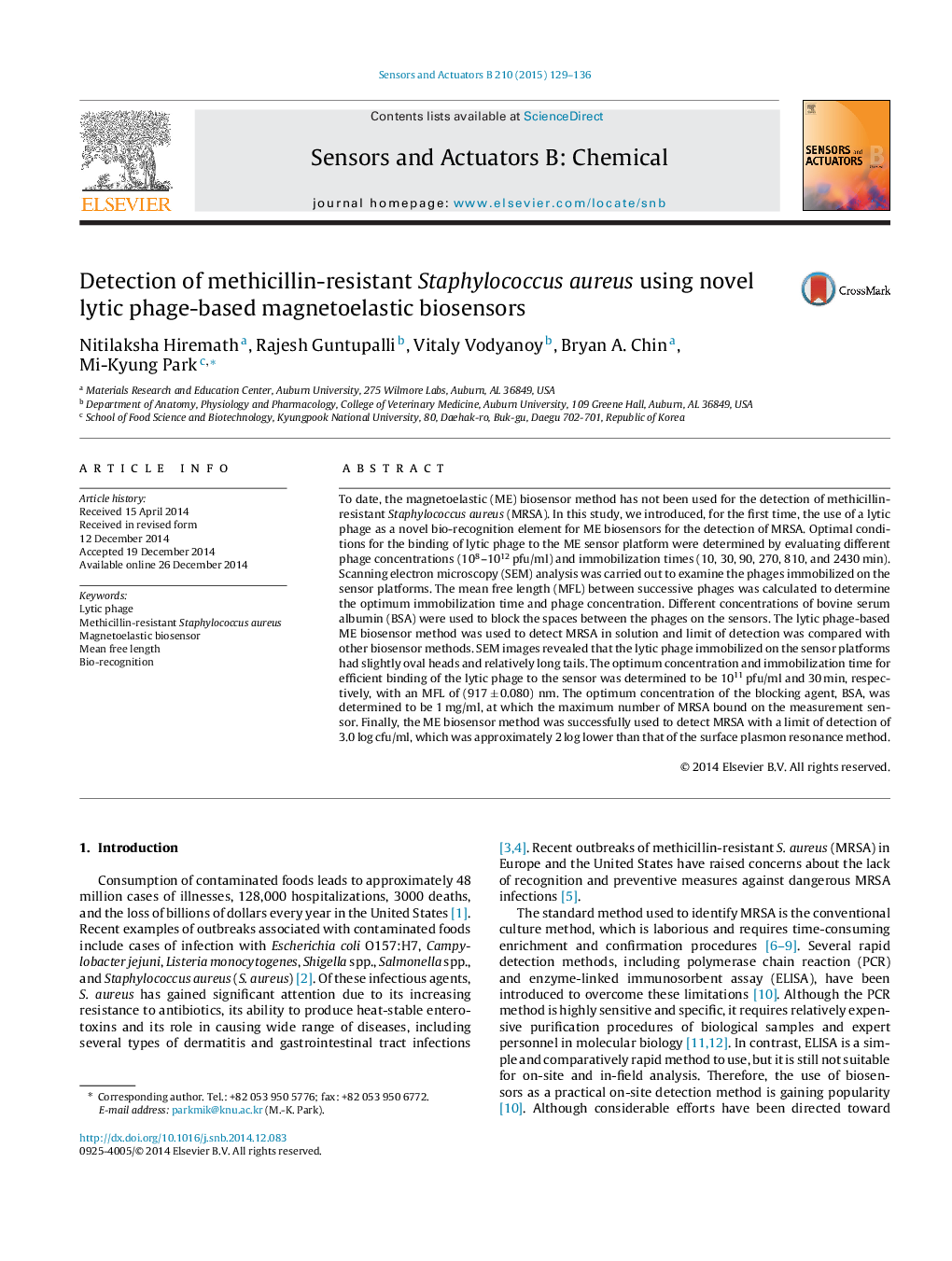| کد مقاله | کد نشریه | سال انتشار | مقاله انگلیسی | نسخه تمام متن |
|---|---|---|---|---|
| 741861 | 1462081 | 2015 | 8 صفحه PDF | دانلود رایگان |
• A lytic phage was first introduced as a novel bio-recognition element for methicillin-resistant Staphylococcus aureus (MRSA) detection.
• The lytic phage-based magnetoelastic (ME) biosensor method was optimized.
• The ME biosensor method was able to detect MRSA successfully.
• Detection limit of the ME biosensor was 2 log lower than that of surface plasmon resonance method.
To date, the magnetoelastic (ME) biosensor method has not been used for the detection of methicillin-resistant Staphylococcus aureus (MRSA). In this study, we introduced, for the first time, the use of a lytic phage as a novel bio-recognition element for ME biosensors for the detection of MRSA. Optimal conditions for the binding of lytic phage to the ME sensor platform were determined by evaluating different phage concentrations (108–1012 pfu/ml) and immobilization times (10, 30, 90, 270, 810, and 2430 min). Scanning electron microscopy (SEM) analysis was carried out to examine the phages immobilized on the sensor platforms. The mean free length (MFL) between successive phages was calculated to determine the optimum immobilization time and phage concentration. Different concentrations of bovine serum albumin (BSA) were used to block the spaces between the phages on the sensors. The lytic phage-based ME biosensor method was used to detect MRSA in solution and limit of detection was compared with other biosensor methods. SEM images revealed that the lytic phage immobilized on the sensor platforms had slightly oval heads and relatively long tails. The optimum concentration and immobilization time for efficient binding of the lytic phage to the sensor was determined to be 1011 pfu/ml and 30 min, respectively, with an MFL of (917 ± 0.080) nm. The optimum concentration of the blocking agent, BSA, was determined to be 1 mg/ml, at which the maximum number of MRSA bound on the measurement sensor. Finally, the ME biosensor method was successfully used to detect MRSA with a limit of detection of 3.0 log cfu/ml, which was approximately 2 log lower than that of the surface plasmon resonance method.
Journal: Sensors and Actuators B: Chemical - Volume 210, April 2015, Pages 129–136
